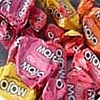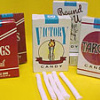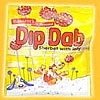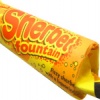Free school milk was a hugely contentious issue in the 1970s. ‘Thatcher, Thatcher the Milk Snatcher’ was commonly heard after the woman herself (she was the Secretary of State for Education at the time) authorised the end to free school milk for children over seven in 1971. The Conservative government of the time was looking for ways to cut spending so that they were able to honour the tax pledges they had made during the 1970 election. The Labour Education Spokesman, Edward Short, called it ‘the meanest and most unworthy thing’ he’d seen in 20 years and it enraged the country, so much so that in 1985 Margaret Thatcher was denied an honorary degree from Oxford University because she took glee in ripping milk away from the mouths of innocent little children.
Or so we thought. Documents that have only recently been released to the public, however, seem to imply that she was actually against the cuts and Prime Minister Edward Heath was the one who insisted she do it. ‘Thatcher, Thatcher, she didn’t really snatch any milk and in fact tried hard to ensure it was still provided’ doesn’t sound quite so catchy though.
To put some historical context to all this, free school milk had been around since the 1906 Education (Provision of Meals) Act, which gave Local Education Authorities [LEAs] the ability to deliver free school meals, including milk. Milk had been recognised as a foodstuff capable of helping children who didn’t receive proper nutrition – good nutrition having been identified as key to effective learning. Not all LEAs embraced these plans though, and by the end of the 1930s not even half had begun distributing the free meals.
In 1945 Ellen Wilkinson, the Minister of Education under prime minister Clement Atlee (and first woman to ever take the post) and anti-poverty champion got Parliament to pass the Free School Milk Act – this gave every school child under 18 the right to a third of a pint of milk each day.
This lasted until 1968, when the Labour Government headed by Harold Wilson cut free milk to all secondary schools. Then came 1971, with the aforementioned ‘Milk Snatcher’ making herself unpopular with her/Heath’s decision to withdraw milk for over 7s. Thankfully, many LEAs continued providing milk using money from other budgets and were helped six years later by the 1977 School Milk Subsidy Scheme from the European Economic Community (EEC), which allowed LEAs to claim extra funding for milk that could be distributed to both primary and secondary schools. In 1978 further funding was provided for any child aged 7 to 12 whose family received Income Support to receive free milk.
The 1980 Education Act allowed LEAs to claim more subsidies (it aded £25 million to the milk fund) but in 1986 this was amended to allow it only to those families with the lowest wages. The budget of 1995 saw another Conservative government cutting the milk provision by withdrawing some of the subsidies.
Nowadays, all pre-school children in England, Scotland and Wales who are five or under are still entitled to one third of a pint of free milk for every day they are at ‘approved day care facilities for two hours or more’. Pre-school care providers are reimbursed for this through the Nursery Milk Reimbursement Unit.
Children at primary and secondary schools in these areas can also receive subsidised milk and yoghurt, organised through the Rural Payments Agency, with Welsh Key Stage 1 children also able to receive free milk via the funds of the Welsh Assembly government. If a family is receiving certain benefits then any children of theirs under seven may also be entitled to free milk, with pupils of special schools able to claim at any age.
In a little bit of personal history my Nan, who was born in 1930 and therefore was in the first wave of children to receive free milk, remembers the milk monitor, always one of the older pupils of the school, who was responsible for checking the milk in when it arrived and then for handing it out to each child.
Whilst there have been many children over the years that benefited from the free school milk; my Dad wasn’t one of them. His recollections of this practice are mainly negative: ‘We were given it at mid-morning break. The crates the milk came in were made of metal and were left in the playground. In the very cold winter weather the milk froze, so it was then stood near the radiators to defrost – yuk! There were no fridges for the milk to be stored in, so in the summer it was always given to us tepid – sometimes even quite warm – and the cream on the top would curdle. I never drank it as I didn’t like it, but plenty of other children did have it.’










Do You Remember Free School Milk?
Do You Remember Free School Milk?